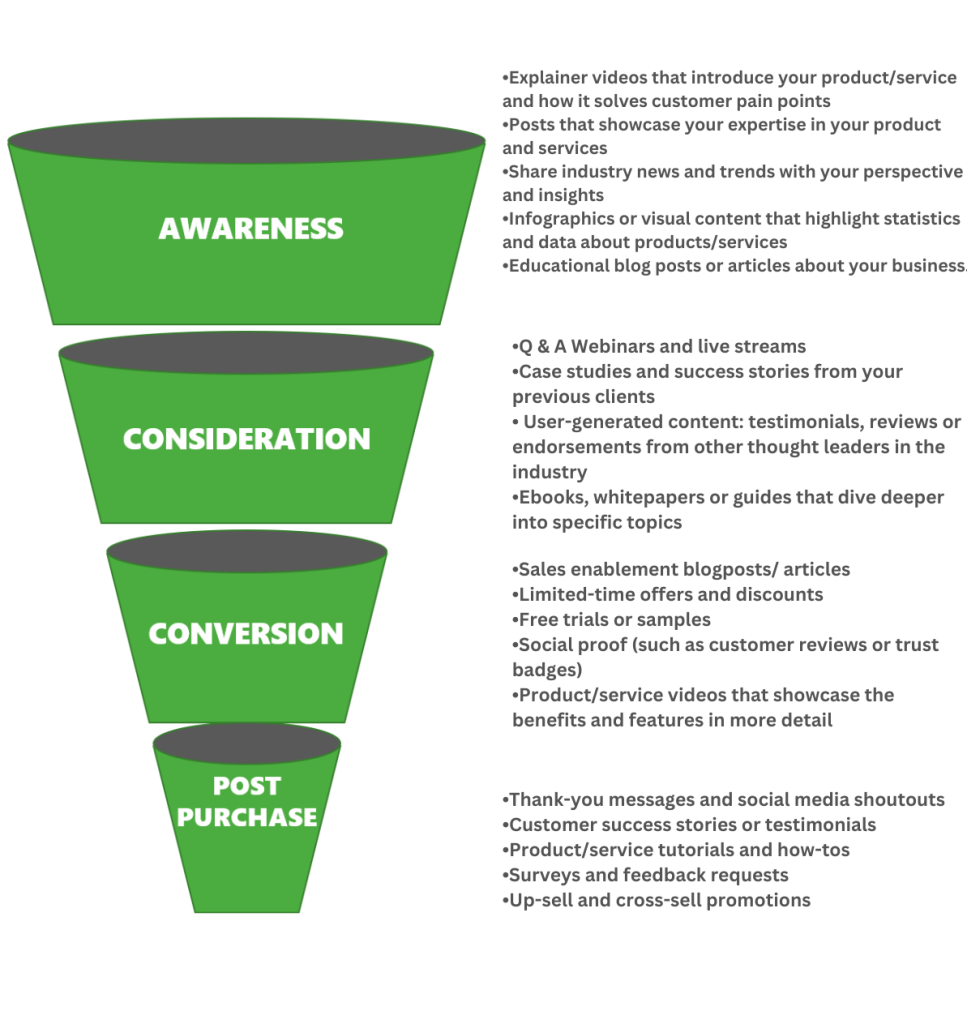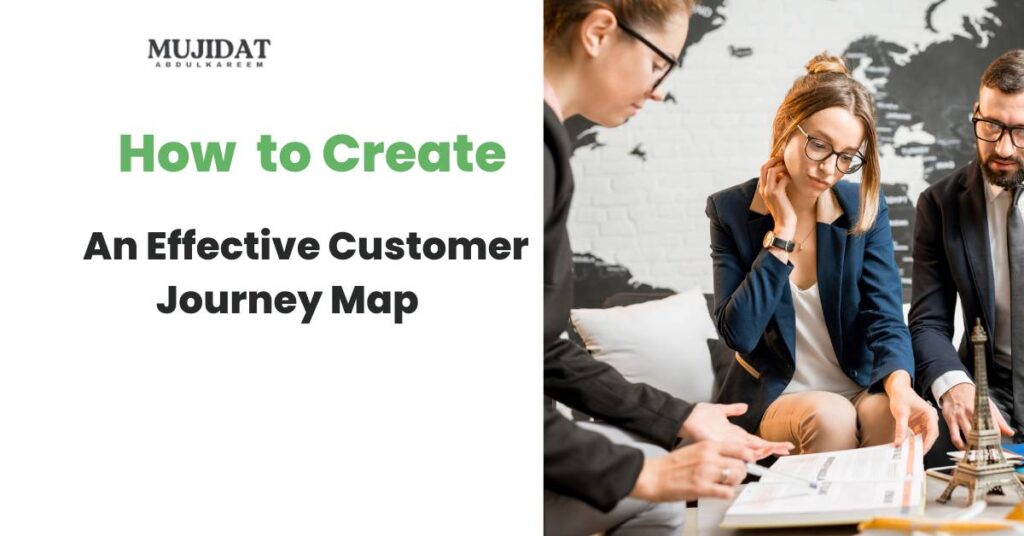In this era of evolving trends, technology and buying preferences, understanding the typical journey a customer would take from the moment they come in contact with your business to the moment of buying your products/services and how they feel after buying your products is crucial for positioning your company for success. `
And that is when a customer journey map comes in handy.
A customer journey map is a diagrammatic representation of the customer interaction with your brand before reaching a specific goal. The goal of creating a customer journey map is to help you deliver memorable customer experience, drive more sales and increase customer retention.
Benefits of Mapping Your Customer’s Journey
-
Improve Customer Experience
Improve Customer Experience By providing better experiences that empower your prospects and customers to interact with and purchase from your company, you will be able to acquire new customers and retain existing ones more easily. How? With customer journey mapping, of course. When you understand the pain points, obstacles, questions and overall journey of your customers, you will be able to make the transition from one step to another as seamless as possible. -
Convert More Customers
Customer journey mapping helps you deliver a positive impact which results in less friction at each customer touchpoint. Making the buyer journey seamless can result in more customers finishing their purchases. For instance, you may discover that your checkout process is long and tiring and is causing a lot of shoppers to abandon their carts. By implementing an easier and faster checkout process, you’ll be able to reduce the number of cart abandonment and convert more customers. -
Improve your Customer Retention Rate
When you have a clear picture of the customer journey, it's easier to identify areas that need improvement. When you do, customers experience fewer shortcomings which leads to fewer people leaving your brand for competitors. After all, 33% of customers will consider switching brands after just one poor experience -
Helps You Understand Your Target Audience
Understanding the customer journey gives you more insights into the demographics and psychographics of your customers. Researching and understanding the needs and pain points of your typical customers and mapping out their journey will give you a clear picture of your target audience. Thus, you can tailor your marketing efforts to best appeal to them. -
Boost employee satisfaction
Companies that implement customer journey mapping are more likely to use cross-functional collaboration, which is when people from various departments work together toward achieving a common goal. This may result in higher employee satisfaction. Teams from different departments may have a better understanding of what other departments' day-to-day activities look like and can appreciate the work each team does in order to improve the customer sales journey.
How To Create a Customer Journey Map
- Define a Clear Objective for your Map
Before mapping a customer journey, you need to know why you are creating it in the first place. What goals are looking to accomplish with this map? If you don’t have a clear goal, you won’t know which area to focus your attention on and how to optimize your map for it maximum potential
- Create Customers Personas
You can’t create a customer journey map without a clear understanding of whom your audience is.
Research to know your audience’s motivation, needs, pain points and frustration and group audiences with similar interests together. This group of people with similar characteristics is called audience persona.
- List out all The Touchpoint
Touch points are places, medium or instances where potential customers come in contact with your business at any stage in their customer journey. Touch points include social media channels, paid ads, newsletter, website etc. Identify every touchpoints optimize them to capture potential customer attentions and provide a better experience with your brand.
- Visualize the Process: It’s time to visualize the overall process of whatever journey you’re trying to map out.
For example, if you’re creating a customer journey map of how a social media user converts into a lead, you might want to make a list of the key steps involved.
- See an ad on social media and clicks on it
- Lands on a landing page and read the page content
- Click on download now
- Fills out the sign-up form
- Land on a confirmation page
- Go to their email to verify their email address
- Receives a Thank You email and the link to download the ebook
Similarly, if you’re creating a journey map how a website visitor converts into a paying customer, you’d want to list down the series of steps that customers take as soon as they land on the product page.
This is important because you’ll organize these steps later into phases or stages, and associate various touchpoints with them. This takes us to the next point.
- Account for Logic and Emotions During the Customer Journey
Keep in mind customers’ logic and emotions in your journey maps to develop an accurate portrayal of their experience.
User Actions: What actions do you want customers to take as they pass through each stage of the customer journey?
Emotions:What emotions do these customers experience before encountering your brand and how do you want them to feel about your brand at each stage of the journey?
Pain Points: Where there is a negative emotion, there’s a something that trigers it. Adding pain points to your map can help you identify which stage your customer is experiencing negative emotions and Pay attention to the cause of the problem.
Solutions: You and your team needs to brainstorm potential ways to improve your buying process so that customers encounter fewer pain points and have positive moods as they patronize your business.
Dedicating time and effort to understanding your customer’s experience with your business can help you delight them at every stage in their buying journey. There are many factors that can affect this journey including customer pain points, mindsets, emotions, and your company’s touchpoints and processes. A customer journey map is the most effective way to improve the experience of your customers with your brand to see better business outcomes.
Social Media Customer Journey Map

Wouldn’t it be great if you had an easy way to figure out the forms of content that would bring guaranteed business results on social media?
That’s why I have compiled these list of the most rewarding content type to help you get better ROI from your social media efforts.
Awareness Stage: During the awareness stage, customers are just learning about your brand and may not have a strong connection or loyalty to it yet. Your social media strategy at this stage should focus on increasing brand awareness and creating a positive first impression.
Content
- Attention-grabbing images and videos to introduce your products/services to potential customers.
- Posts that showcase your expertise in your product and services
- Share industry news and trends with your perspective and insights
- Infographics or visual content that highlight statistics and data about products/services
- Blog posts or articles that educate her audience about business.
Consideration Stage: During the consideration stage, customers are evaluating whether your brand is a good fit for their needs. Your social media strategy at this stage should focus on building relationships and providing valuable information that helps customers make informed decisions.
Content
- Webinars and live streams that answer customer questions and provide in-depth knowledge
- Case studies and success stories from your previous clients
- user-generated content: testimonials, reviews or endorsements from other thought leaders in the industry
- Ebooks, whitepapers or guides that dive deeper into specific topics
Conversion Stage: During this stage, customers are ready to make a purchase or take another desired action. Your strategy at this stage should focus on making it easy for customers to take action and providing an excellent customer experience.
Content
Content: Share product demos,
- Sales enablement blogpost
- Limited-time offers and discounts
- Free trials or samples
- Social proof (such as customer reviews or trust badges)
- Product/service videos that showcase the benefits and features in more detail
- Live chat or customer service support
Post Purchase: At this stage, customers have made a purchase and are happy with their experience. Your social media effort at this stage should focus on nurturing the customer relationship and building loyalty.
Content
- Thank-you messages and social media shoutouts
- Customer success stories or testimonials
- Product/service tutorials and how-tos
- Surveys and feedback requests
- Up-sell and cross-sell promotions
- Share personalized content that shows you value your customers and appreciate their business.
- Offer loyalty programs and incentives to encourage repeat purchases.
- Encourage customers to share their experiences with your brand on social media.
Dedicating time and effort to understanding your customer’s experience with your business can help you delight them at every stage in their buying journey. There are many factors that can affect this journey including customer pain points, mindsets, emotions, and your company’s touchpoints and processes. A customer journey map is the most effective way to improve the experience of your customers with your brand to see better business outcomes.

